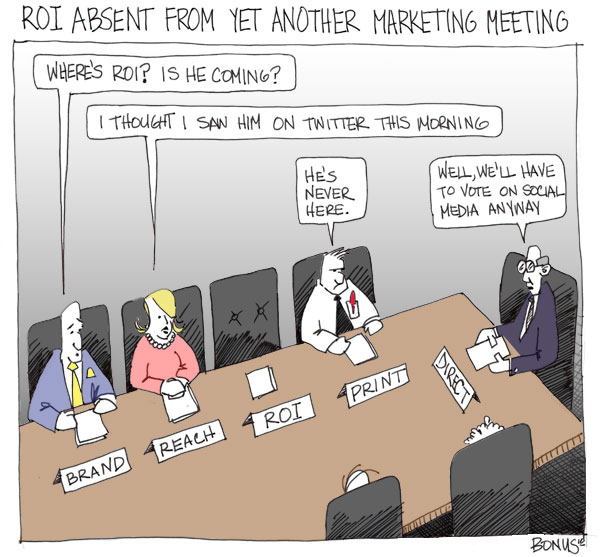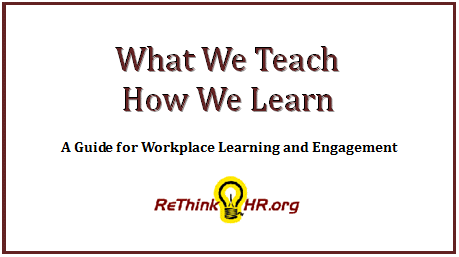 It begins with a market need
It begins with a market need
Your a business owner, a consultant, a manager, a new employee… you see a need for something new and different. You begin to create, develop and market a product people will want. What are the steps you take? Who do you talk to in order to understand the past failures and successes to realize a sustainable future?
For a product or service it is pretty simple. You begin with an assessment and calculate the market need. You estimate and add up the operational cost and any other unexpected expenses that you may incur. You add the resources that will be used to create, maintain and sell your product. You take all that and subtract those costs from your estimated profit. How much you spent subtracted from how much you make is your revenue and potential ROI.
(Net Benefit / Costs) * 100 = ROI %
Market need for Leadership?
You are a member of leadership, a C-level executive, learning and development head… you notice a deficiency in your ranks. A lack of attitude, passion, drive, management style. Something missing in the way your people interact both personally and professionally. Strategy, critical thinking and vision are not always evident. You see a lack of something but you can’t pinpoint what it is. You want your front-line managers to take charge. You wish your direct reports, directors and VPs could have a better hand on the pulse of the organization and the thoughts of employees. You need your key people to become LEADERS. You need them to transform. You need a product (program) to do it.
However, soft skills, the abilities and innate insights born out of experience, coaching, circumstance and yes…training; these qualities are not traditionally considered in budget items, profit margins or revenue. If they are, they can be slashed at any moment. They are operational expenses, rather than looked at as organizational assets.
I believe that an organization - when it approaches the metrics of leadership need to - understand and be shown the value of such qualities just like any product or service. We also need to be prepared to defend a business case. Yet how do you show that value? How do you translate the skills of leadership into metrics and equity for the organization. Dan McCarthy delved into this topic over at GreatLeadership.com. I have some further ideas to add particularly on the side of measuring Leadership Development Programs (LDP).
7 Ways to measure a Leadership Program
While not always in the form of net dollar savings, you can show proof or evidence of how your program contributed to the organizational results.
- Assessments. Anyone running an HR or L&D department that is worth their salt will do a deep assessment of various levels of the organization. This means evaluating what programs have been done in the past. Looking at past results. Reviewing performance reviews. Understanding the current content, programs and people that have been put in place. The attitudes around past, present and future initiatives. That individual will interview key people (C-level, Directors, Managers and employees of influence) in order to understand the expectations of results versus realities. Note: I do understand that this is not always allowed or possible in some organizations. But if you leave this out, you will have problems on implementation and expectations all throughout development and implementation of your program.
- Objective and desired result. Begin to develop your program with 3 to 4 outcomes or behaviors that you expect to see after it is completed. Have clear objectives for each part of your program and make sure that you gain agreement on those outcomes and objectives. Afterward you can show actions or behaviors were improved or changed as a result against the objective.
- Knowledge: Pre and Post-Test. Create tests based on your content. Deliver the tests to your program participants to check current knowledge, skill or ability against what they have gained from the program. After you have taken them through your program, give the test again. Compare your initial scores|outcomes against the final test.
- Outcomes: Have behaviors changed? Do you notice a difference in attitude, initiative, collaboration? Are you witness to more sharing between departments; amongst management and employees? Are the staff complaints starting to increase or diminish? While not necessarily hard data, these items can be used as indicators for measurement and the performance review as a tool to aide.
- Participant Group versus Non-Participants. If you have a program that only takes a locked number of individuals at any level of the organization, use the results from groups that attended and compare them to those that did not attend in the same areas. This will give you data to use and draw comparisons over time.
- Costs: The simplest form of ROI measurement if the one we discussed earlier. (Net Benefit / Costs) X 100 = ROI %. In the end you either spent more or saved more.
- Over Time. Creating and implementing your program and reviewing the result over one year is not enough to show a sustained improvement. You will need run multiple programs over time to have a systematic change in outcomes. You will need all this data over time in order to compare it to your past performance.
There is no standard
An organization will always have to:
- Define what leadership means within the realm of its own business and culture, and
- Define and create metrics to measure the results
Until there is one universal definition of leadership and leadership development, there will never be one standard to follow on metrics.
Do you think differently? How do you measure leadership development and its affects on the organization?


 It begins with a market need
It begins with a market need
